Let there be light: Here’s a peak of Kenya’s off-grid ecosystem and the firms busy exploiting the sun to generate energy
undefined
- As per the Kenya Vision 2030 energy plan, most of the country’s electricity has to come from renewable sources in 2030 and beyond.
- Kenya enjoys a largely favorable weather all year round filled with plenty of sun. The country receives daily insolation of 4-6kWh/m2.
- Here’s why the country’s abundant solar is ripe for exploitation.
‘And God said, Let there be light: and there was light’ Here are firms who have taken the saying to heart and brought it to life literally by turning their eyes towards the sky to tap into the abundant solar energy.
And if there is anywhere ideal to tap solar energy with ease then it is Kenya. As per the Kenya Vision 2030 energy plan, most of the country’s electricity has to come from renewable sources, at the utility, commercial, and industrial scales, and as off-grid solutions, in 2030 and beyond.
Over the last few years, a vibrant solar energy market has developed in the country providing electricity to homes and institutions remote from the national grid. Solar energy is complemented by other renewable energy sources such as geothermal and wind energy.
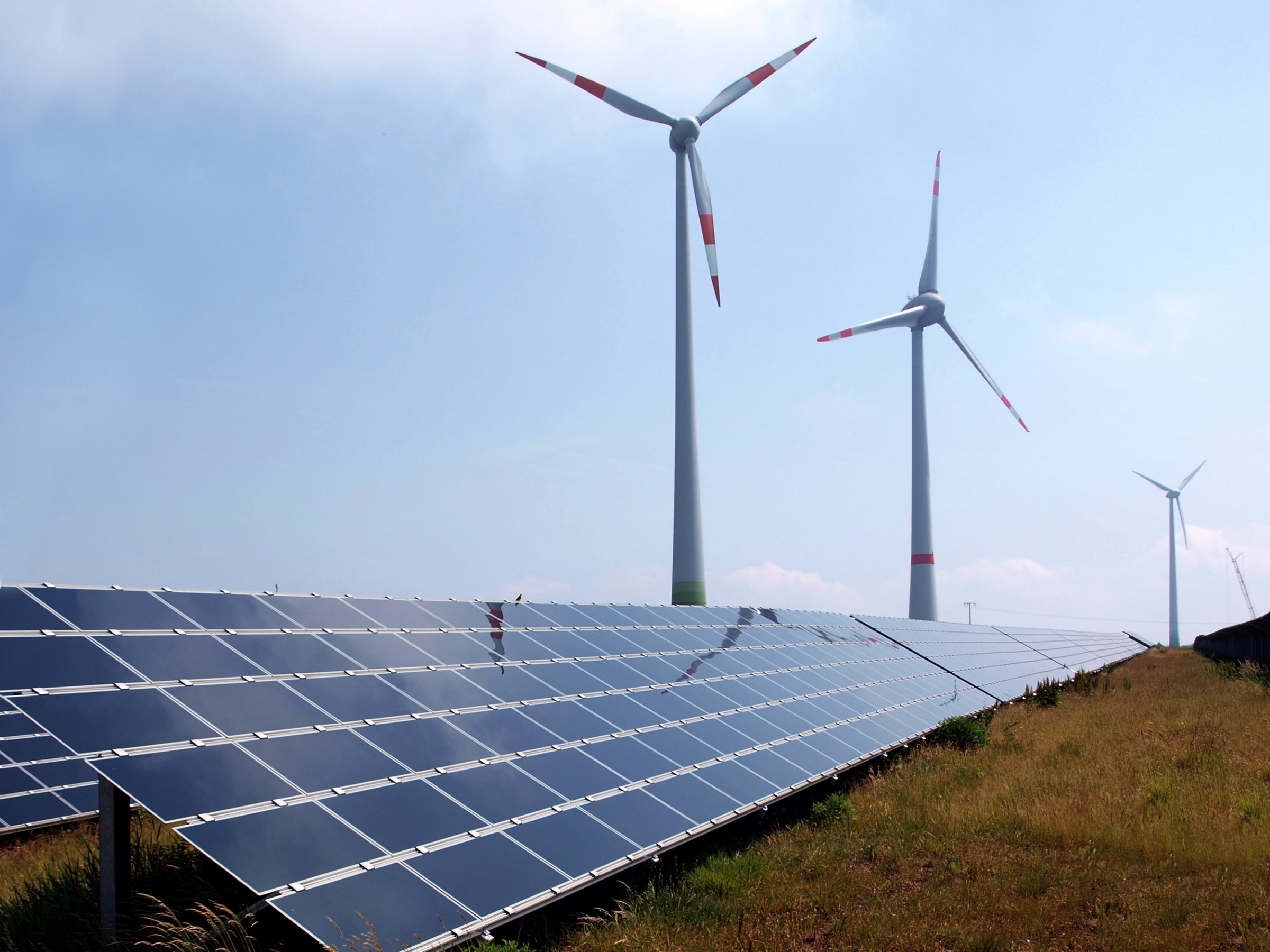 undefined
undefined The rest of the continent has a lot of catching up with Kenya which was ranked third globally in geothermal energy capacity and number one in Africa by the Renewables Global Status report, 2017. The country boasts an impressive capacity of 600 megawatts (MW) as of 2017 .
On July 18th 2019, Kenya officially unveiled Africa’s largest wind power plant project - the Lake Turkana Wind Power plant. The sprawling wind farm located on the shores of Lake Turkana in northern Kenya is packed with 365 turbines each with a capacity of 850kW, and a high voltage substation that has been connected to the Kenyan national grid through an associated Transmission Line; constructed by the Kenyan Government.
Geothermal is expected to provide more than one-third of the total installed capacity and around 55% of the country’s electricity generation by 2025.
Kenya energy needs
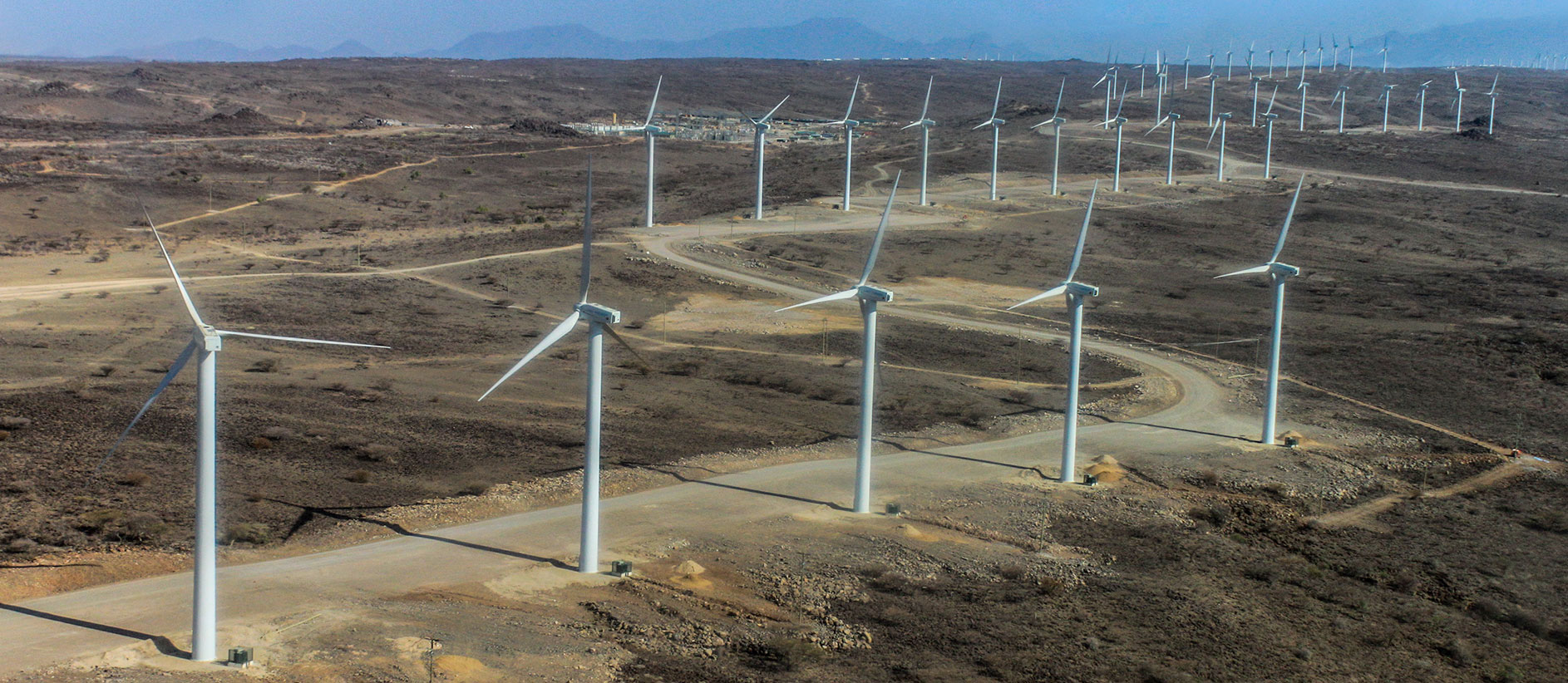 Lake Turkana wind farm.
Lake Turkana wind farm. Like any fast developing nation, Kenya is hungry for power to fuel its economic growth. In 2017, Kenya’s demand for electricity exceeded 1.5GW. The country has a total installed capacity of 2.4GW, according to power technology.
Geothermal contributes one-quarter of its installed capacity but has more than a 45% share in the country’s overall electricity generation.
Kenya’s installed capacity of solar photovoltaics (PV) power totals 93 MW, of which 56.25 MW is connected to the grid, meaning 40% of solar power comes from off-grid sources.
‘Force’ behind Kenya’s fast developing solar industry
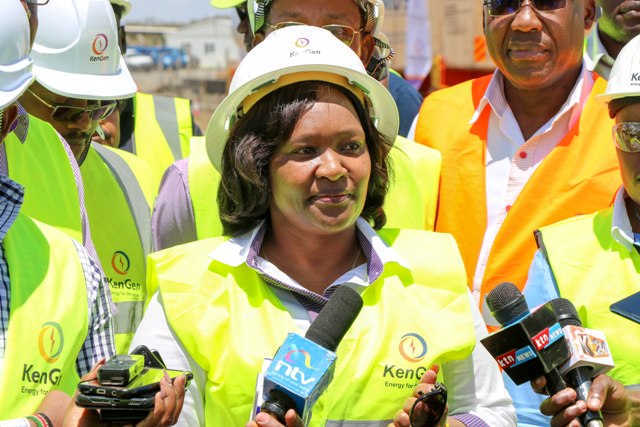 KenGen CEO Rebecca Miano
KenGen CEO Rebecca Miano In a bid to entice investors to pump money into the country’s solar industry, the Government has zero-rated the import duty and removed Value Added Tax (VAT) on renewable energy equipment and accessories.
The Energy Regulatory Commission prepared and gazetted the Energy (Solar Water Heating) Regulations 2012 and The Energy (Solar Photovoltaic) Regulations 2012 to provide the much needed policy framework.
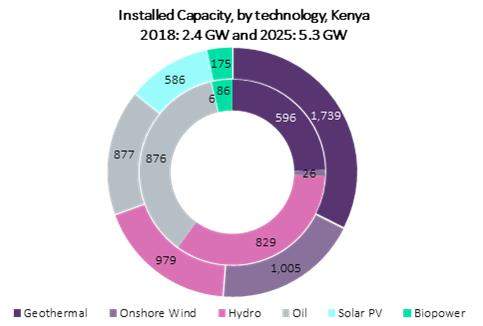 Installed capacity, by technology, Kenya, 2018: 2.4 GW and 2025: 5.3 GW. (power-technology)
Installed capacity, by technology, Kenya, 2018: 2.4 GW and 2025: 5.3 GW. (power-technology) A government programme which commenced in 2005 to provide basic electricity to boarding schools and health facilities in remote areas has increased the annual demand for PV panels by 400 kilowatt peak, according to Ministry of Energy.
Out of approximately 3,000 eligible institutions, 450 have been equipped with PV Systems with a combined capacity of 1,450 kilowatts peak in the last four years. Another 400 institutions are earmarked to benefit from installation of PV systems with a combined estimated capacity of 80 kilowatts peak, a statement on the ministry’s website reads.
Solar is the way to go
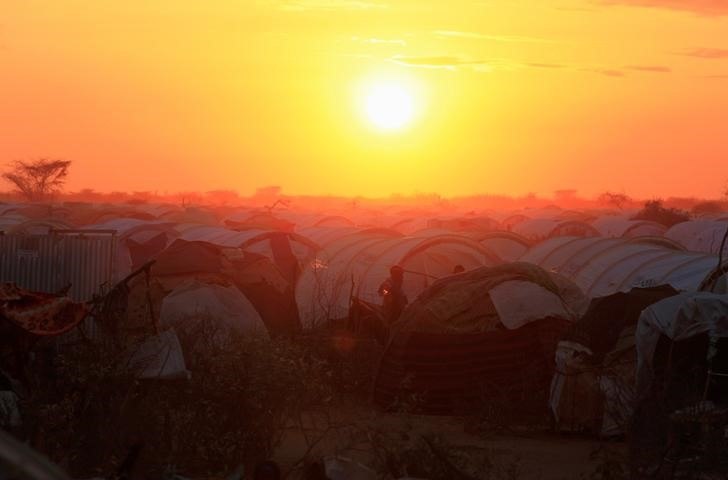 The sun sets over the Ifo extension refugee camp in Dadaab, near the Kenya-Somalia border, in Garissa County, Kenya, July 31, 2011.
The sun sets over the Ifo extension refugee camp in Dadaab, near the Kenya-Somalia border, in Garissa County, Kenya, July 31, 2011. Back to solar, Kenya enjoys a largely favorable weather all year round filled with plenty of sun. The country receives daily insolation of 4-6kWh/m2.
Solar utilization is mainly for photovoltaic (PV) systems, drying and water heating. On commercial scale, the solar PV systems are used mainly for telecommunication, cathodic protection of pipelines, lighting and water pumping.
According to Asoko Insight, Africa’s leading corporate information platform, there are 56 leading companies in Kenya’s off-grid solar ecosystem. The firms have specialized in providing different goods and services ranging from solar products, solar systems, advisory services and engineering, procurement and construction (EPC) services for contracts involving small-scale solar installations of up to 20 MW.
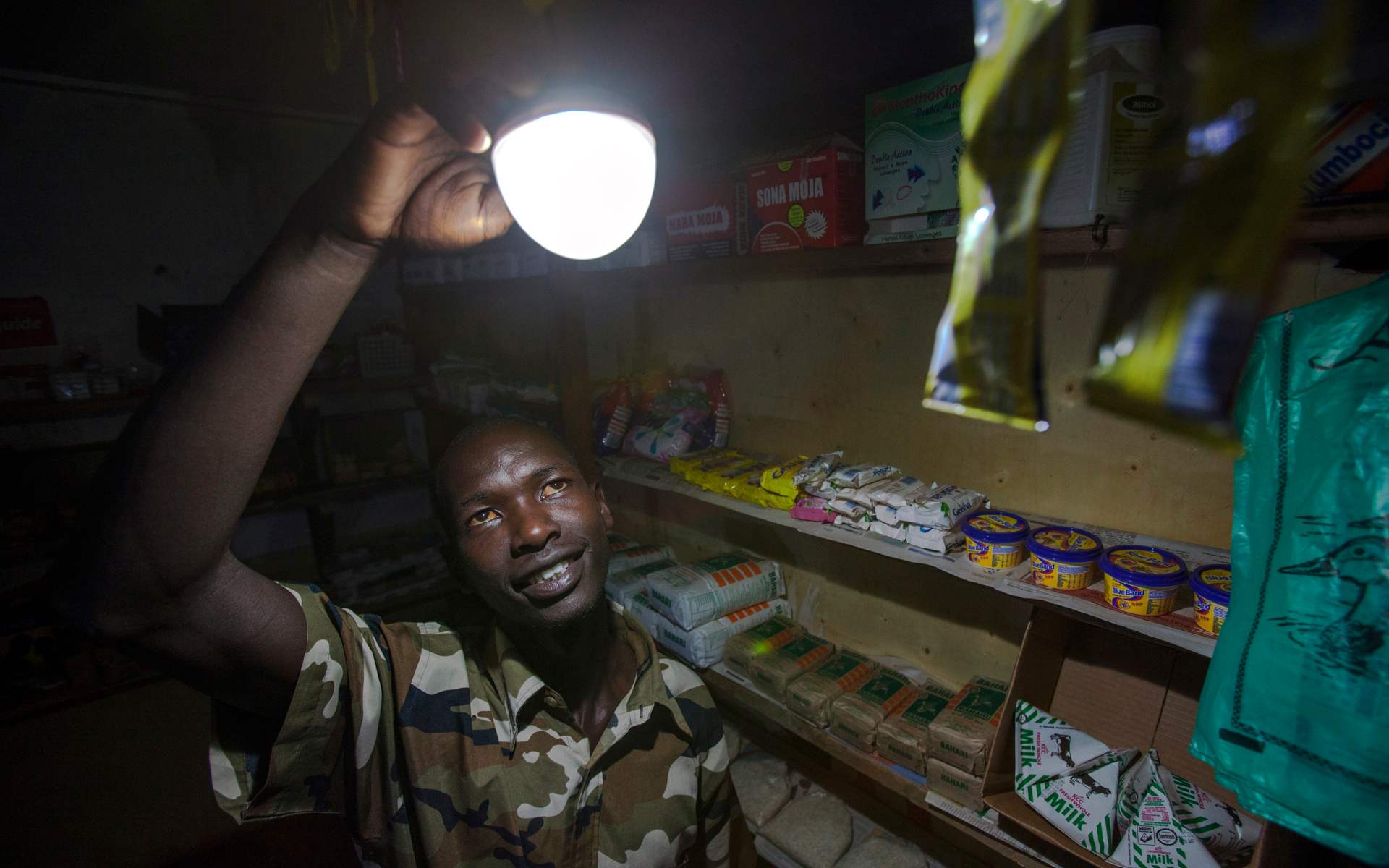 A shopkeeper in Kenya enjoying light emitted by a bulb powered by solar energy.
A shopkeeper in Kenya enjoying light emitted by a bulb powered by solar energy. The majority of players (71.42%) produce solar products, with 35% of these firms also involved in another activity, largely the provision of solar systems in which to plug their goods.
The solar systems segment is the second-largest space, with a total of 26 companies operating in this space, most alongside other activities.
Investors are jostling for space to get a piece of Kenya’s vast solar ecosystem
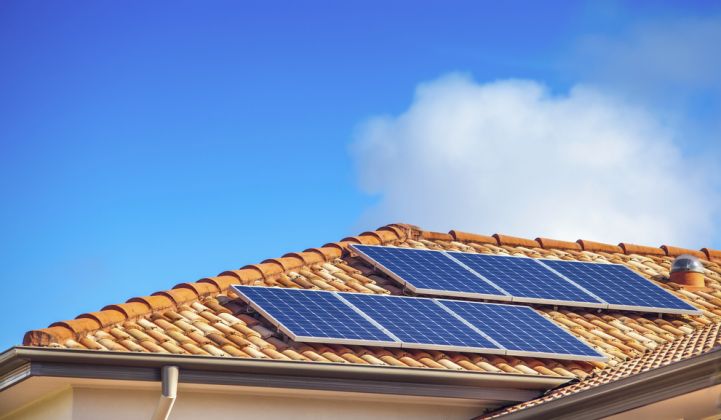 Invest in solar energy
Invest in solar energy According to Asoko, investors in this space are mainly strategic investors with a focus on sustainable energy solutions. The rapid development of the market has seen the entrance of a number of new competitors in a relatively small space of time, diluting the earning potential of individual players. Thus the majority (75%) of companies mapped earn annual revenues under $1 million. At the other end of the spectrum, a smaller number (15%) of firms have revenues above $10 million, with a majority of these players earning between $10 million to $25 million.
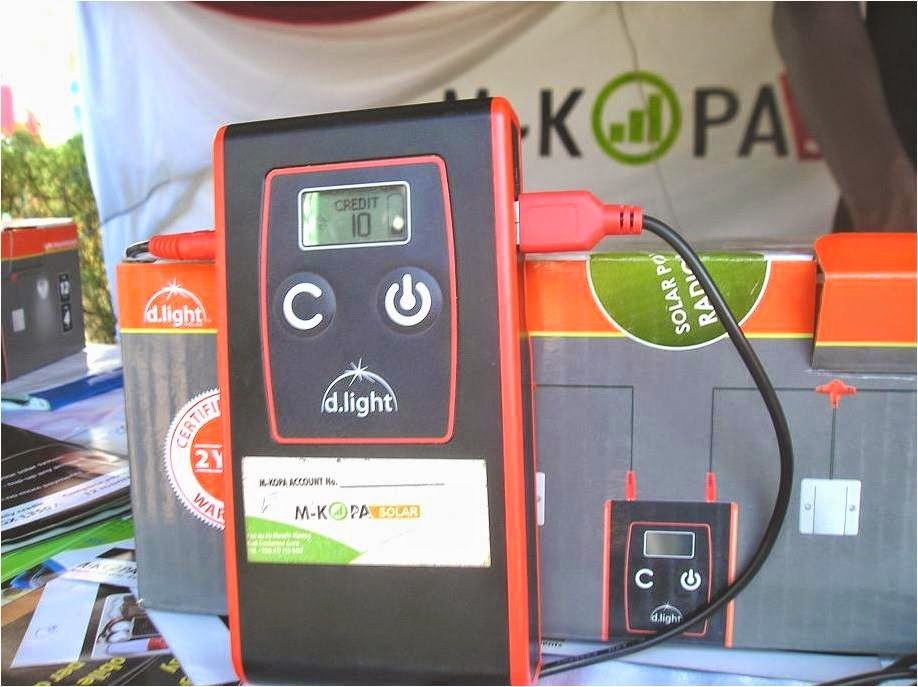 M-kopa, a pioneer of the pay-as-you-go business model for solar power.
M-kopa, a pioneer of the pay-as-you-go business model for solar power. The most visible and the market leader in Kenya’s solar energy industry is M-kopa, a pioneer of the pay-as-you-go business model for solar power.
The firm allows customers to pay small amounts through their mobile phone for a home solar system or solar products. The model has since been adopted by a number of companies, though M-kopa remains a market leader.
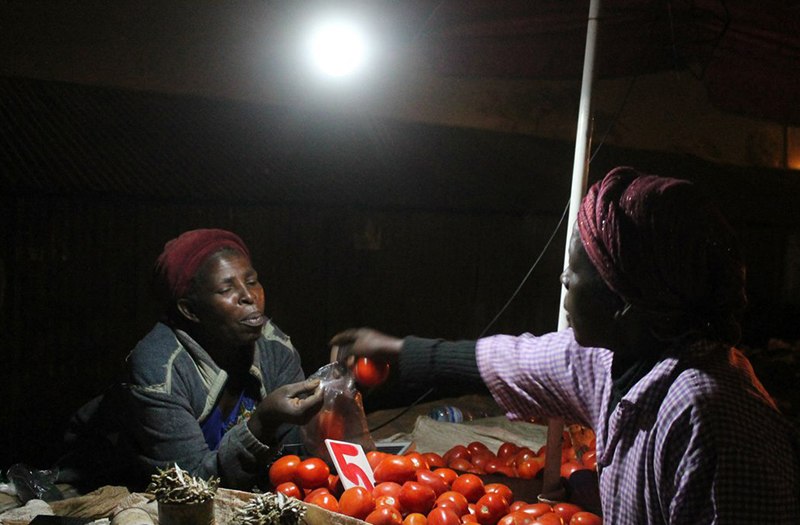 A vegetable vendor selling her wares deep into the night while relying on solar powered bulb to provide light.
A vegetable vendor selling her wares deep into the night while relying on solar powered bulb to provide light. Asoko tracked investment activity across Africa between 2015 and 2018 and found 29 investment deals among the identified solar companies in Kenya during this period.
Of these, the value was disclosed for 24 deals, which were collectively worth $684 million. The investments listed include financing directed to Kenyan operations, parent companies and subsidiaries elsewhere in Africa.
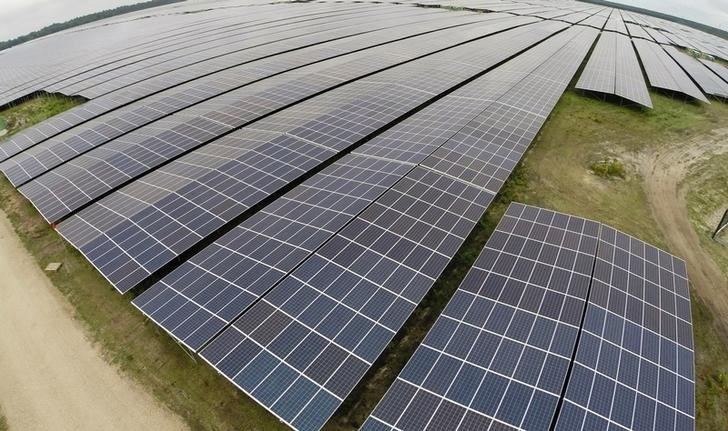 A general view shows solar panels.
A general view shows solar panels. Two Kenyan-based firms specialising in clean energy financing participated in six deals. KawiSafi Ventures, for example, made capital investments in both BBOXX and d.light, while SunFunder was active in two of d.light’s funding rounds as well as that of another solar operator.
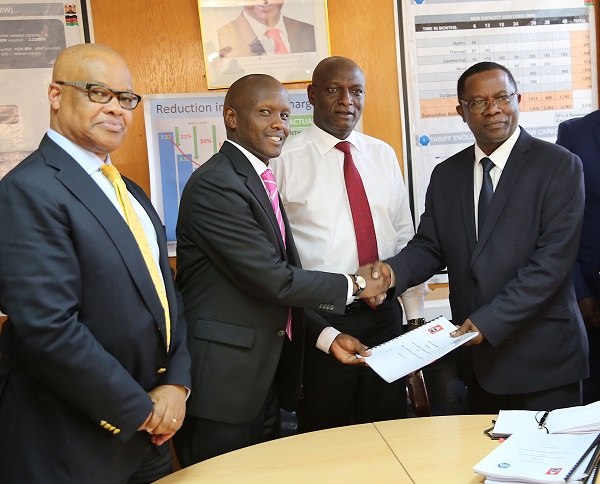 Energy CS Charles Keter (second right) with Kenya Pipeline Company (KPC) officials during a past event
Energy CS Charles Keter (second right) with Kenya Pipeline Company (KPC) officials during a past event In recent years, international investors have also moved in to get a slice of the fast expanding industry. The Dutch Development Bank, for example, was involved in three deals and the IFC in four, while Norway’s Norfund took part in two of d.light’s funding round.
The Kenyan government reckons an opportunity exists for manufacture of associated components and accessories, such as charge controllers, inverters and PV batteries.
Source:
Let there be light: Here’s a peak of Kenya’s off-grid ecosystem and the firms busy exploiting the sun to generate energy- gist culled from
pulseng



















